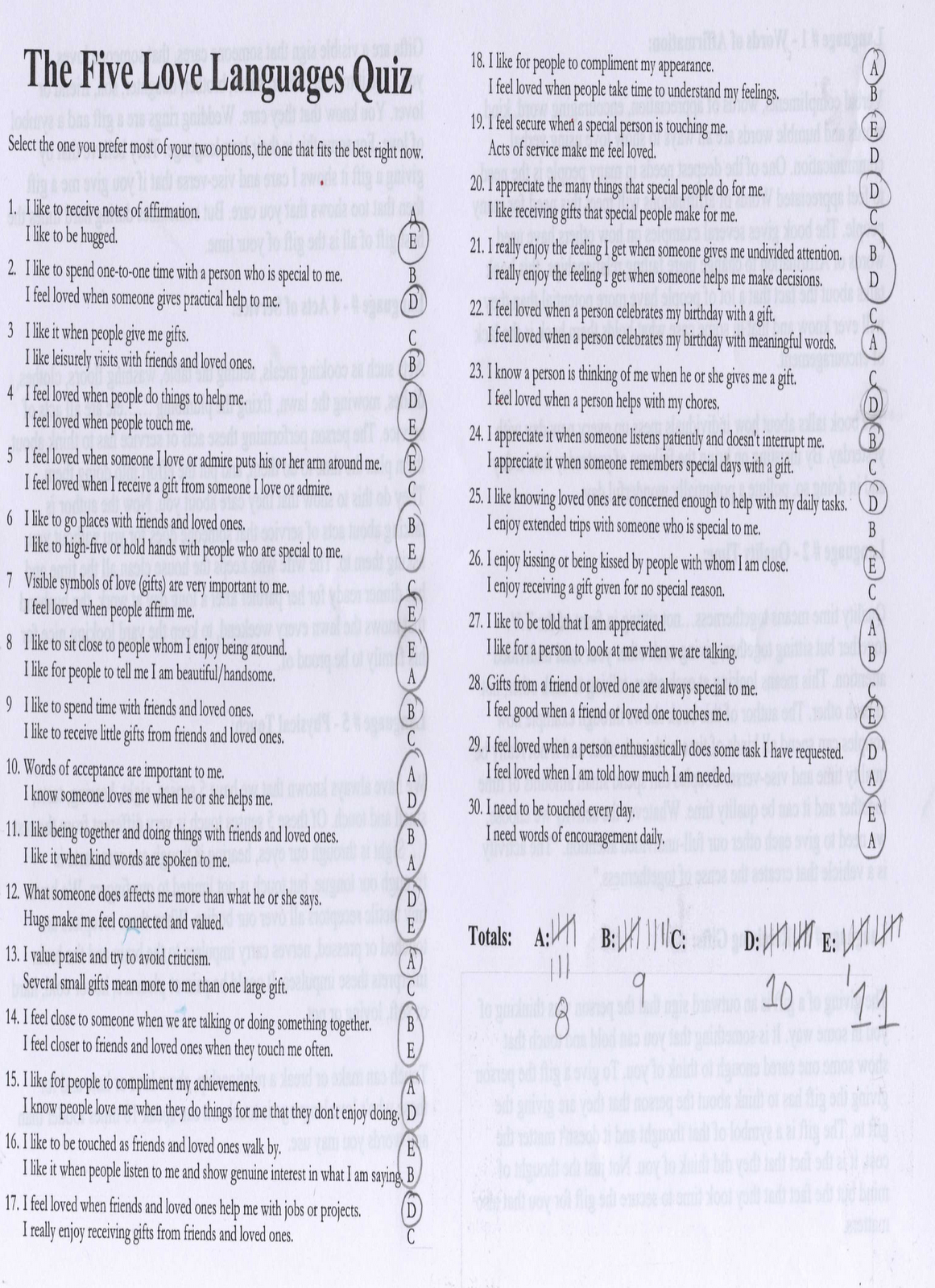

Some people speak acts of service as their primary love language. They see the gift as an extension of you and your love.

Remember, for them, this is love’s loudest voice. But those whose language of love is receiving gifts will respond differently when they get their gift. It is true that all children-and adults-want to have more and more. You might be inclined to think that this is so for all children, judging from the way they beg for things. Most children respond positively to gifts, but for some, receiving gifts is their primary love language. The most meaningful gifts become symbols of love, and those that truly convey love are part of a love language. The giving and receiving of gifts can be a powerful expression of love, at the time they are given and often extending into later years. If quality time is your child’s primary love language, you can be sure of this: Without a sufficient supply of quality time and focused attention, your child will experience a gnawing uneasiness that his parents do not really love him. The most important factor in quality time is not the event itself but that you are doing something together, being together. When you spend quality time with children, you need to go to their physical/emotional level of development. He feels truly loved because he has his parent all to himself. I like being with you.” It makes the child feel that he is the most important person in the world to the parent. It conveys this message: “You are important. Quality time is a parent’s gift of presence to a child. It means giving a child your undivided attention. A child reaps the benefits of affirming words for a lifetime. Even though such words are quickly said, they are not soon forgotten. Words of affection and endearment, words of praise and encouragement, words that give positive guidance all say, “I care about you.” Such words are like a gentle, warm rain falling on the soul they nurture the child’s inner sense of worth and security. In communicating love, words are powerful. Without hugs, kisses, pats on the back, and other physical expressions of love, their love tanks will remain less than full. Of course, they receive love in all the languages, but for them, the one with the clearest and loudest voice is physical touch.

A mom reads a story with her three-year-old on her lap.įor children who understand this love language, physical touch will communicate love more deeply than will the words, “I love you,” or giving a present, fixing a bicycle, or spending time with them. He spins his seven-year-old daughter round and round, and she laughs wildly. A dad tosses his year-old son in the air. Hugs and kisses are the most common way of speaking this love language, but there are other ways, too.

Here, he shares descriptions of his 5 love languages list. Gary Chapman says knowing your child’s love language can make all of the difference in your relationship. What is true for romantic love is also true for the love we have for our children. But as adults, we know that loving others-whether a spouse, a family member, a friend or simply your neighbor-is more often an exercise in self-sacrifice and putting others first. Storybooks and television tell our children that love is a mushy, wonderful thing that’s all butterflies and romance and rainbows.


 0 kommentar(er)
0 kommentar(er)
